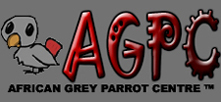Discover How To Stop Your Parrot From Biting You >>>>
Gentle and Effective Training Tips
When asked why she believes that birds are descended from dinosaurs, an acquaintance of mine who owns a Scarlet Macaw will readily reply: “Would you like to see the scar on my arm?”
Beliefs about the origins of birds aside, most can agree that some parts of a bird’s anatomy can deliver quite painful attacks if our pets become angry with us. Indeed, the instincts and inherently wild nature of our avian companions can bring forth many behaviors that are undesirable in the home. Dealing with these issues can be especially trying for bird owners, given that their feathered friends are such highly sociable and emotionally sensitive creatures. Read on for tips that will help you gently but effectively convey your displeasure toward undesirable behavior in your pet bird.
-
The Rules of Avian Discipline Although at times your pet may behave in a way that annoys you or makes you downright mad, it’s important to remember these rules when responding to the transgression:
-
Never hit a bird. Birds are extremely fragile creatures and even the slightest force can cause severe injury or death. Physically abusing a bird can also lead to irreversible psychological problems, and can promote aggression and viciousness.
-
Don’t hold a grudge. Birds are extremely intelligent, but also very sensitive creatures. When you express displeasure with your bird’s behavior, make the lesson short and sweet. Prolonged negative attention can cause undue emotional stress for your pet.
-
Never compromise your bird’s health. “Punishing” a bird by witholding food or neglecting cage cleaning is never a fit way to deal with a behavior problem. Such actions are not only cruel, but can cause serious physical and emotional damage for the pet.
How to Correct Badly Behaved Birds : Responding to Bad Behaviour
In order for your bird to understand you when you catch him acting up, it’s necessary that you remember the correct way to respond. While a normal “human” response to an unpleasant discovery would be to loudly declare your grievance, a bird can interpret this reaction and body language as excitement — meaning that he may actually think you are praising the behavior. Conclusively, dealing with a bird’s behavior problem can be just as much about training yourself as it is about training your pet.
In order to respond properly to undesirable behavior, it’s helpful to keep the following steps in mind. With consistency and patience, you may find that it won’t take long for your bird to catch on.
-
Have the bird step up onto your hand. When your bird misbehaves, have him step up onto your hand and hold him at eye level.
-
Be very expressive. Don’t be afraid to frown at your bird. Avians are capable of picking up on facial expressions, and most get the idea if your body language expresses your distaste for his actions.
-
Speak softly, but sternly. Use a tone of voice that is low but not loud when you tell your bird that he has done wrong. Be as “matter of fact” as possible, but keep it short. You will be amazed at how effective it can be!
-
Place your bird on his cage or perch. After you’ve conveyed your dissatisfaction, have your bird step off of your hand and onto his cage or perch. Allow him to stay there for a few minutes to reflect on what happened, and then go back and interact playfully with your pet — he should know that you are no longer upset with him, and that he is now being a good bird.
How to Correct Badly Behaved Birds : Consistency is Key
All birds are individuals, and some may catch on quicker than others. Don’t get discouraged if your pet’s behavior doesn’t change overnight. As long as you stay consistent with your training methods, your bird will likely understand you sooner rather than later.
Remember that positively reinforcing good behavior is just as important than pointing out and modifying bad behavior. If you notice your bird acting exceptionally well, don’t miss the chance to lavish praise on your pet. Birds respond much more readily to training techniques that focus on the positive rather than the negative, so don’t forget to incorporate lots of fun and praise into your training methods.
With a little work, patience, and love, your bird should be acting like an angel in no time. Your effort will be rewarded with a beautiful, intelligent, and well-behaved pet — and who could ask for anything more?
About the Author
From Alyson Burgess


